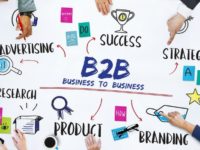It’s a really quite simple…well sort of!
As an SME owner, if you are looking to drive your B2B sales whether through your existing clients (which by the way should be your starting point) or through new customer acquisition then the focus of the efforts across the company comes down to one key activity:
Make it easy for clients to buy
This is also referred to as buyer enablement. But what is it?
Buyer enablement can be described as “The provision of information and insights that supports the provision of critical buying jobs”.
The six B2B buying jobs that buyers complete as part of their purchase decisions are:
- problem Identification
- solution exploration
- requirements
- supplier selection
- validation
- consensus creation.
Buyer enablement is comprised of two key components:
- Prescriptive advice – the “What”
Advice and expertise to help B2B buyers needs to:
- Address their problems, challenges and objectives.
- Clarify goal setting during uncertain times.
Help them decide “what to do” or “not do” to complete their buying jobs.
2. Practical Support – the “How”
Information and tools should enable buyers to:
- Complete activities pertaining to the six B2B buying jobs.
- Address internal buying processes and requirements of their company.
Examples of tools include:
- White Papers
- online calculators
- demonstrations
- free trials
- assessments.
Why is buyer enablement important?
B2B buying is challenging now more than ever than before.
The typical buying process in larger organisations such as corporations typically consists of:
- Buying committees of six to 10 people.
- Each committee member looking at four to five 5 information sources they obtained themselves through independent research.
- The committee then trying to complete the six buying jobs to reach consensus on a course of action.
It is important to note that the completion of buying jobs is often NOT done in a linear, straightforward manner. Buying stages are often revisited and repeated as part of consensus building.
As a result, 77 per cent of buyers feel that the purchases have become very complex and difficult.
Therefore, providing buyers with advice, tools and support across the multiple buying jobs helps buyers perceive a job as easier thereby increasing their overall confidence leading them to buy a solution.
Creating buyer enablement tools
Your marketing and sales teams should be working together to assess buyer needs and determine the buyer enablement tools required across the six B2B buying jobs.
However, participation will also be needed from other teams and departments including:
- client delivery
- customer service
- customer success
- operations.
Business customers will spend about two-thirds of their buying journey learning whatever information and tools they can find. When developing your buyer enablement tools, it is important to take a customer perspective and consider the following:
- Buying committee participants-their roles/titles.
- Buyer preferences for specific kinds of information and tools.
- Internal approval and decision processes.
Insights into these areas are obtained by “listening” to your business customers and prospects.
Four characteristics of effective buyer enablement tools are that they are:
- Easily SHARED with stakeholders regardless of time zone and geography.
- Are ACCESSIBLE where and how buyers prefer.
- TARGETED to help stakeholders complete specific buying jobs
- Have information and insights that are CONSISTENT across delivery channels.
Take action now
To develop your SME’s approach to buyer enablement, begin with speaking to your current clients and key prospects:
- Who are now the decision makers for your offering?
- What are their urgent priorities and challenges?
When meeting internally with your marketing and sales teams:
- Identify opportunities to add value through prescriptive advice or practical support.
- Determine the required tools and information needed.
Michael Haynes, B2B Customer Strategy Specialist and Founder, Listen Innovate Grow















